
|
It brightened up to 8 mag from 2022 summer to 2023 spring. Now it is 10.2 mag (Apr. 23, Jose Guilherme de S. Aguiar). Fading slowly. In the Northern Hemisphere, it is not observable now, but it will appear in August. It stays extremely low in the Southern Hemisphere. But it will become high in summer.
Date(TT) R.A. (2000) Decl. Delta r Elong. m1 Best Time(A, h)
May 20 5 9.31 -19 26.8 3.218 2.594 44 9.6 20:40 ( 85,-27)
May 27 5 18.82 -17 39.7 3.317 2.653 42 9.8 20:47 ( 90,-31)
|
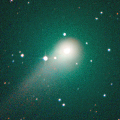
|
Now it is 10.6 mag (Apr. 9, Ken-ichi Kadota). It stays 10 mag for a while. Now it is not observable. It will appear in June.
Date(TT) R.A. (2000) Decl. Delta r Elong. m1 Best Time(A, h)
May 20 2 47.61 23 5.1 3.202 2.232 13 10.0 3:13 (236, -6)
May 27 2 52.21 21 54.5 3.173 2.238 18 10.0 3:07 (239, -4)
|
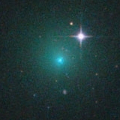
|
It has large but very diffuse coma. It seems to brighten up to 9-10 mag in July. Now it is 11.4 mag (May 17, Toshihiko Ikemura, Hirohisa Sato). It will turn to fade out rapidly after brightening. In the Northern Hemisphere, it stays observable in good condition. In the Southern Hemisphere, it is not observable now, but it will appear in August.
Date(TT) R.A. (2000) Decl. Delta r Elong. m1 Best Time(A, h)
May 20 12 10.70 64 3.2 0.768 1.233 86 11.3 20:40 (176, 61)
May 27 12 14.66 66 58.5 0.764 1.176 81 10.9 20:47 (171, 57)
|
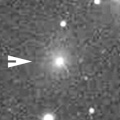
|
It is expected to brighten up to 8 mag in July. Now it is 10.5 mag (May 19, Giuseppe Pappa). It will brighten rapidly after this. In the Northern Hemisphere, it is not observable now, but it will be observable soon. In the Southern Hemisphere, it stays observable in good condition. At the high light, it will be observable in excellent condition in the Southern Hemisphere, but it will be very low in the Northern Hemisphere.
Date(TT) R.A. (2000) Decl. Delta r Elong. m1 Best Time(A, h)
May 20 0 43.64 -12 9.8 2.173 1.793 54 11.7 3:13 (282, -3)
May 27 0 43.81 -13 3.4 1.976 1.741 61 11.4 3:07 (286, 0)
|
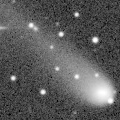
|
Now it is 11.7 mag (May 11, Osamu Miyazaki). Fading slowly. It will be getting lower gradually after this, and it will be unobservable in July in the Northern Hemisphere, or in August in the Southern Hemisphere. But it will be observable again in September in the Southern Hemisphere.
Date(TT) R.A. (2000) Decl. Delta r Elong. m1 Best Time(A, h)
May 20 10 35.27 -4 2.5 3.286 3.654 103 11.8 20:40 ( 41, 42)
May 27 10 30.21 -4 30.6 3.421 3.662 95 11.9 20:47 ( 51, 36)
|
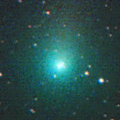
|
Now it is 11.8 mag (May 17, Osamu Miyazaki). Fading gradually. In the Northern Hemisphere, it will be getting higher gradually. It locates somewhat low in the Southern Hemisphere. But it will become high in summer.
Date(TT) R.A. (2000) Decl. Delta r Elong. m1 Best Time(A, h)
May 20 0 48.19 37 47.7 2.726 2.090 42 11.9 3:13 (239, 23)
May 27 0 52.60 37 10.7 2.716 2.139 45 12.1 3:07 (241, 26)
|
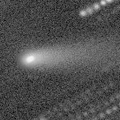
|
It approached to Earth down to 0.12 a.u. in April, and brightened up to 11.5 mag (Apr. 8, Osamu Miyazaki). Now it is 12.5 mag (May 8, Giuseppe Pappa). It will fade out rapidly after this. It will be fainter than 18 mag in July. In the Northern Hemisphere, it is not observable now, but it will appear in June. In the Southern Hemisphere, it stays observable in good condition.
Date(TT) R.A. (2000) Decl. Delta r Elong. m1 Best Time(A, h)
May 20 0 46.53 -8 51.9 0.522 0.807 52 12.2 3:13 (279, -2)
May 27 1 3.71 -8 3.5 0.602 0.829 54 12.6 3:07 (279, -1)
|

|
Now it is 12.2 mag (Apr. 30, Marco Goiato). Fading slowly. In the Northern Hemisphere, it is not observable now. In the Southern Hemisphere, it stays observable in good condition. It was expected to brighten up to 10 mag from spring to summer. However, it is fainter than originally expected.
Date(TT) R.A. (2000) Decl. Delta r Elong. m1 Best Time(A, h)
May 20 20 59.88 -66 6.8 2.541 3.075 112 12.3 3:13 (348,-13)
May 27 21 5.14 -69 58.3 2.502 3.078 115 12.3 3:07 (351,-16)
|
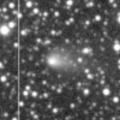
|
It brightened very rapidly as expected. Now it is 12.1 mag (May 16, Osamu Miyazaki). Fading gradually. It stays observable in good condition.
Date(TT) R.A. (2000) Decl. Delta r Elong. m1 Best Time(A, h)
May 20 19 54.35 -10 41.5 1.284 1.988 119 12.5 3:13 (342, 43)
May 27 19 58.13 -9 0.2 1.231 1.990 124 12.4 3:07 (347, 45)
|
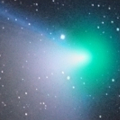
|
It approached to Earth down to 0.29 a.u. in early February, and it brightened up to 4.5 mag (Feb. 1, Juan Jose Gonzalez). Now it is 11.6 mag (Apr. 23, Jose Guilherme de S. Aguiar). Fading gradually. In the Northern Hemisphere, it is not observable now, but it will appear in September. It locates somewhat low in the Southern Hemisphere. But it will become high in summer.
Date(TT) R.A. (2000) Decl. Delta r Elong. m1 Best Time(A, h)
May 20 5 30.21 -13 55.2 2.846 2.209 42 12.7 20:40 ( 87,-20)
May 27 5 36.11 -14 53.5 2.949 2.290 41 12.9 20:47 ( 90,-27)
|
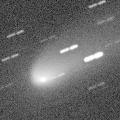
|
Now it is 12.6 mag (May 17, Osamu Miyazaki). It will fade out rapidly after this. It stays observable in good condition.
Date(TT) R.A. (2000) Decl. Delta r Elong. m1 Best Time(A, h)
May 20 17 41.17 -18 14.2 1.217 2.165 152 12.8 1:54 ( 0, 37)
May 27 17 34.98 -18 13.6 1.224 2.205 160 12.9 1:20 ( 0, 37)
|

|
It brightened up to 8.3 mag in 2021-2022 winter (Jan. 6, 2022, Toshiyuki Takahashi). Now it is 12.2 mag (May 14, Hiroshi Abe). Fading slowly. In the Northern Hemisphere, it will be unobservable in June. In the Southern Hemisphere, it stays observable in good condition.
Date(TT) R.A. (2000) Decl. Delta r Elong. m1 Best Time(A, h)
May 20 9 9.62 -30 37.6 5.444 5.586 92 13.0 20:40 ( 42, 9)
May 27 9 12.87 -30 22.0 5.564 5.630 88 13.1 20:47 ( 47, 5)
|
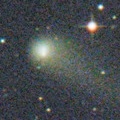
|
It brightened up to 11.1 mag in early 2022 (Mar. 31, 2022, F. Kugel, J.-G. Bosch, J. Nicolas). Now it is 13.0 mag (May 17, Osamu Miyazaki). Fading slowly. It stays observable in good condition.
Date(TT) R.A. (2000) Decl. Delta r Elong. m1 Best Time(A, h)
May 20 15 25.67 20 20.9 4.284 5.097 139 13.3 23:34 ( 0, 75)
May 27 15 22.61 20 55.2 4.349 5.128 136 13.4 23:03 ( 0, 76)
|
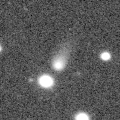
|
It is expected to brighten up to 7 mag in early 2024. Now it is 14.2 mag (May 17, ATLAS Chile). Brightening gradually. In the Northern Hemisphere, it is not observable now. It locates somewhat low in the Southern Hemisphere. But it will become high in winter.
Date(TT) R.A. (2000) Decl. Delta r Elong. m1 Best Time(A, h)
May 20 6 3.31 -24 45.0 4.200 3.728 55 13.8 20:40 ( 73,-19)
May 27 6 11.66 -24 18.4 4.161 3.657 53 13.7 20:47 ( 76,-24)
|
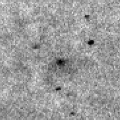
|
Now it is 13.5 mag (May 11, Ken-ichi Kadota). Fading slowly. In the Northern Hemisphere, it will be getting higher gradually. In the Southern Hemisphere, it stays observable in good condition.
Date(TT) R.A. (2000) Decl. Delta r Elong. m1 Best Time(A, h)
May 20 0 5.21 -8 25.7 2.198 1.923 60 14.0 3:13 (285, 7)
May 27 0 17.73 -7 20.2 2.170 1.957 64 14.1 3:07 (285, 9)
|

|
The brightness evolution is slower than originally predicted. Now it is 14.8 mag (May 7, ATLAS South Africa). Fading slowly. In the Northern Hemisphere, it is not observable now. It locates somewhat low in the Southern Hemisphere. But it will become high in winter.
Date(TT) R.A. (2000) Decl. Delta r Elong. m1 Best Time(A, h)
May 20 5 22.45 -27 52.1 2.484 2.046 53 14.0 20:40 ( 74,-29)
May 27 5 38.85 -29 22.1 2.471 2.057 54 14.0 20:47 ( 75,-33)
|
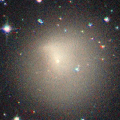
|
Now it is 14.6 mag (May 9, Ken-ichi Kadota). It stays 14 mag for a while. It will be unobservable in June. But it will be observable again in August.
Date(TT) R.A. (2000) Decl. Delta r Elong. m1 Best Time(A, h)
May 20 6 49.15 26 32.2 6.805 6.100 42 14.1 20:40 (110, 19)
May 27 6 54.27 26 20.2 6.879 6.102 37 14.1 20:47 (113, 13)
|

|
It is expected to brighten up to 11 mag in July. Now it is 19.0 mag (May 8, iTelescope Deep Sky Chile, Rio Hurtado). Brightening rapidly. It stays extremely low in the Northern Hemisphere. But it will become high in autumn. It locates somewhat low in the Southern Hemisphere. Recently it is much fainter than this ephemeris.
Date(TT) R.A. (2000) Decl. Delta r Elong. m1 Best Time(A, h)
May 20 0 27.36 12 54.4 1.633 1.211 47 14.7 3:13 (264, 14)
May 27 0 57.64 15 15.7 1.583 1.152 46 14.1 3:07 (261, 14)
|
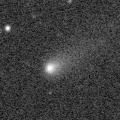
|
Now it is 14.2 mag (May 9, Yukihiro Sugiyama). Fading gradually. In the Northern Hemisphere, it will be unobservable in August. In the Southern Hemisphere, it stays observable in good condition.
Date(TT) R.A. (2000) Decl. Delta r Elong. m1 Best Time(A, h)
May 20 13 31.88 -31 50.8 1.450 2.369 147 14.2 21:41 ( 0, 23)
May 27 13 26.90 -32 7.1 1.497 2.376 141 14.3 21:08 ( 0, 23)
|
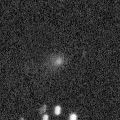
|
Rob Matson discovered it as a bright new comet as 11 mag from SWAN images between Apr. 5 and 15. It was revealed to be an asteroid which has been observed also in 2012 and 2018. It approached to Sun down to 0.5 a.u. on Mar. 29. Now it is 13.6 mag (Apr. 20, Michael Jager). It will fade out rapidly after this. It will be fainter than 18 mag in July. In the Northern Hemisphere, it is not observable now, but it will appear in June. In the Southern Hemisphere, it stays observable in good condition.
Date(TT) R.A. (2000) Decl. Delta r Elong. m1 Best Time(A, h)
May 20 3 10.62 -74 56.8 0.388 1.114 94 14.4 3:13 (342,-42)
May 27 0 32.08 -89 10.1 0.400 1.213 110 14.9 3:07 (358,-35)
|
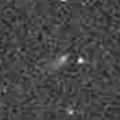
|
It will brighten rapidly up to 13.5 mag in summer. Now it is 15 mag (May 19, Giuseppe Pappa). It stays 14 mag for a while. In the Northern Hemisphere, it is not observable now, but it will be observable soon. In the Southern Hemisphere, it will be getting lower gradually after this, and it will be unobservable in September.
Date(TT) R.A. (2000) Decl. Delta r Elong. m1 Best Time(A, h)
May 20 0 47.16 -13 13.5 2.164 1.784 54 14.6 3:13 (283, -5)
May 27 0 58.53 -10 7.1 2.096 1.764 57 14.5 3:07 (282, -1)
|
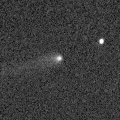
|
Now it is 14.9 mag (Mar. 19, Masayoshi Yoshimi). It stays 14 mag for a while. In the Northern Hemisphere, it is not observable now, but it will appear in June. In the Southern Hemisphere, it will be getting higher gradually.
Date(TT) R.A. (2000) Decl. Delta r Elong. m1 Best Time(A, h)
May 20 2 41.34 1 46.0 4.134 3.234 23 14.7 3:13 (253,-19)
May 27 2 42.30 2 29.8 4.083 3.234 28 14.7 3:07 (256,-15)
|
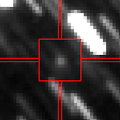
|
Now it is 16.2 mag (May 15, ATLAS Chile). It stays 15 mag for a while. In the Southern Hemisphere, it stays observable in good condition. It is fainter than this ephemeris recently.
Date(TT) R.A. (2000) Decl. Delta r Elong. m1 Best Time(A, h)
May 20 18 35.07 -18 50.8 2.119 2.965 139 14.9 2:47 ( 0, 36)
May 27 18 33.21 -19 44.7 2.053 2.956 147 14.8 2:18 ( 0, 35)
|
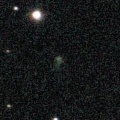
|
It will brighten up to 13 mag in summer. Now it is 15.8 mag (May 11, Ken-ichi Kadota). Brightening slowly. In the Northern Hemisphere, it will be getting higher gradually. In the Southern Hemisphere, it is not observable now, but it will appear in August.
Date(TT) R.A. (2000) Decl. Delta r Elong. m1 Best Time(A, h)
May 20 2 0.51 63 9.2 1.975 1.480 46 15.2 3:13 (209, 25)
May 27 1 55.70 63 19.3 1.916 1.450 48 15.0 3:07 (210, 27)
|
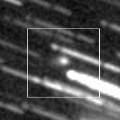
|
Now it is 15.5 mag (May 10, ATLAS Chile). It stays 15 mag for a while. It stays observable in good condition. It is expected to brighten up to 12.5 mag in 2024 spring. At the high light, it will be observable in excellent condition in the Southern Hemisphere, but it will be low in the Northern Hemisphere.
Date(TT) R.A. (2000) Decl. Delta r Elong. m1 Best Time(A, h)
May 20 17 43.35 22 51.8 3.316 4.024 128 15.1 1:56 ( 0, 78)
May 27 17 30.91 23 3.0 3.227 3.975 131 15.0 1:16 ( 0, 78)
|
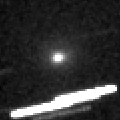
|
Brightened rapidly. It continues brightening even after the perihelion passage. Now it is 14.9 mag (May 16, Toshihiko Ikemura, Hirohisa Sato). It will fade out rapidly after this. It will be fainter than 18 mag in July. It stays observable in good condition.
Date(TT) R.A. (2000) Decl. Delta r Elong. m1 Best Time(A, h)
May 20 12 48.56 -9 21.4 1.106 1.965 136 15.1 20:58 ( 0, 46)
May 27 12 56.93 -6 7.0 1.197 2.007 130 15.4 20:47 ( 3, 49)
|
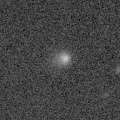
|
Now it is 15.3 mag (May 9, Ken-ichi Kadota). It stays 15 mag for a while. It will be unobservable in June in the Northern Hemisphere, or in August in the Southern Hemisphere. But it will be observable again in September. It is expected to brighten up to 12 mag from 2024 to 2025.
Date(TT) R.A. (2000) Decl. Delta r Elong. m1 Best Time(A, h)
May 20 8 54.62 -2 33.1 5.644 5.543 79 15.3 20:40 ( 65, 27)
May 27 8 54.73 -1 44.5 5.720 5.501 72 15.2 20:47 ( 72, 21)
|
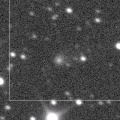
|
It will brighten up to 14 mag from 2024 to 2025. Now it is 15.2 mag (May 15, ATLAS Chile). It stays 15 mag for a while. In the Northern Hemisphere, it will be unobservable in June. In the Southern Hemisphere, it stays observable in good condition.
Date(TT) R.A. (2000) Decl. Delta r Elong. m1 Best Time(A, h)
May 20 8 57.22 -30 5.4 6.069 6.155 90 15.3 20:40 ( 44, 8)
May 27 9 1.24 -29 27.6 6.114 6.125 85 15.3 20:47 ( 50, 4)
|
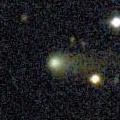
|
Now it is 15.3 mag (May 9, Ken-ichi Kadota). Fading slowly. It will be unobservable in August in the Southern Hemisphere, or in September in the Northern Hemisphere.
Date(TT) R.A. (2000) Decl. Delta r Elong. m1 Best Time(A, h)
May 20 9 55.81 27 28.7 3.466 3.496 83 15.3 20:40 ( 88, 56)
May 27 10 2.94 26 53.9 3.573 3.514 78 15.4 20:47 ( 91, 50)
|

|
Now it is 16.0 mag (May 1, iTelescope Deep Sky Chile, Rio Hurtado). It stays 15 mag for a while. In the Northern Hemisphere, it will be getting higher gradually. In the Southern Hemisphere, it stays observable in good condition.
Date(TT) R.A. (2000) Decl. Delta r Elong. m1 Best Time(A, h)
May 20 0 5.20 -7 42.8 3.776 3.395 60 15.4 3:13 (284, 7)
May 27 0 12.13 -7 6.9 3.703 3.409 65 15.4 3:07 (286, 10)
|

|
It brightened up to 13.4 mag in last summer (July 7, Giuseppe Pappa). Now it is 15.4 mag (May 2, Ken-ichi Kadota). Fading slowly. In the Northern Hemisphere, it stays observable in good condition. It locates somewhat low in the Southern Hemisphere.
Date(TT) R.A. (2000) Decl. Delta r Elong. m1 Best Time(A, h)
May 20 17 2.95 28 37.0 3.100 3.807 128 15.5 1:16 ( 0, 83)
May 27 16 50.65 30 18.7 3.145 3.849 127 15.6 0:36 ( 0, 85)
|
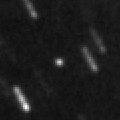
|
It will approach to Sun down to 0.4 a.u. in late September in 2024, and it is expected to brighten up to 0 mag. Now it is 16.0 mag (May 14, G. Masi). It stays 16 mag for a while. It stays observable in good condition. At the high light, in the Northern Hemisphere, it will be observable in good condition after the perihelion passage. In the Southern Hemisphere, it will be observable in the low sky before and after the perihelion passage.
Date(TT) R.A. (2000) Decl. Delta r Elong. m1 Best Time(A, h)
May 20 14 37.40 2 56.9 5.624 6.534 151 16.4 22:46 ( 0, 58)
May 27 14 32.30 3 8.2 5.610 6.469 145 16.4 22:13 ( 0, 58)
|
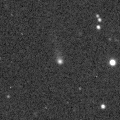
|
Now it is 16.7 mag (May 3, ATLAS South Africa). It stays 16 mag for a while. In the Northern Hemisphere, it will be unobservable in June. In the Southern Hemisphere, it will be getting lower gradually. But it will be getting higher again after August.
Date(TT) R.A. (2000) Decl. Delta r Elong. m1 Best Time(A, h)
May 20 8 19.40 -9 51.3 4.043 3.884 73 16.4 20:40 ( 65, 16)
May 27 8 20.56 -10 21.8 4.121 3.866 68 16.4 20:47 ( 70, 9)
|
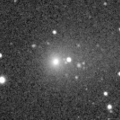
|
It brightened up to 12.4 mag in winter (Feb. 10, Taras Prystavski). Now it is 17.5 mag (May 9, Yukihiro Sugiyama). Fading gradually. It will be fainter than 18 mag in July. In the Northern Hemisphere, it will be getting lower gradually.
Date(TT) R.A. (2000) Decl. Delta r Elong. m1 Best Time(A, h)
May 20 9 45.25 18 30.5 2.202 2.324 83 16.5 20:40 ( 76, 50)
May 27 9 55.90 17 46.5 2.313 2.356 79 16.7 20:47 ( 80, 45)
|

|
It will brighten up to 16 mag in June. Now it is 18.3 mag (May 10, Hidetaka Sato). It will fade out rapidly after this. It will be fainter than 18 mag in July. In the Northern Hemisphere, it is not observable now, but it will appear in July. In the Southern Hemisphere, it will be unobservable in July. In its last apparition in 2014, it was re-observed after 36-year blank.
Date(TT) R.A. (2000) Decl. Delta r Elong. m1 Best Time(A, h)
May 20 1 10.39 0 36.1 1.348 0.908 42 17.2 3:13 (268, -1)
May 27 1 46.00 5 24.0 1.358 0.854 38 16.6 3:07 (262, -1)
|
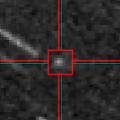
|
It is expected to brighten up to 7.5 mag in October, and it will be observable in excellent condition. Now it is 18.6 mag (May 17, Jean-Claude Merlin). It will brighten rapidly after this. It stays observable in good condition. In the Southern Hemisphere, it becomes low temporarily around the high light.
Date(TT) R.A. (2000) Decl. Delta r Elong. m1 Best Time(A, h)
May 20 21 46.92 2 45.0 1.838 2.075 88 17.1 3:13 (301, 40)
May 27 21 57.92 4 36.3 1.709 2.014 91 16.7 3:07 (301, 43)
|
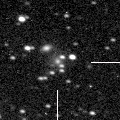
|
Very far object. Now it is 17.0 mag (May 11, ATLAS South Africa). It stays 17 mag for a while. In the Northern Hemisphere, it is not observable now. In the Southern Hemisphere, it stays observable in good condition.
Date(TT) R.A. (2000) Decl. Delta r Elong. m1 Best Time(A, h)
May 20 5 9.48 -67 33.3 10.330 10.357 88 16.8 20:40 ( 28,-40)
May 27 5 12.96 -67 21.6 10.318 10.354 89 16.8 20:47 ( 28,-43)
|
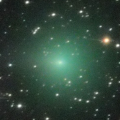
|
It brightened up to 9.7 mag in autumn (Oct. 23, Marco Goiato). Now it is 16.8 mag (May 12, ATLAS Chile). It will fade out rapidly after this. It will be fainter than 18 mag in June. It locates somewhat low in the Northern Hemisphere. In the Southern Hemisphere, it stays observable in good condition.
Date(TT) R.A. (2000) Decl. Delta r Elong. m1 Best Time(A, h)
May 20 14 38.09 -36 3.2 1.679 2.645 158 16.8 22:45 ( 0, 19)
May 27 14 13.69 -32 28.7 1.775 2.708 151 17.2 21:54 ( 0, 23)
|
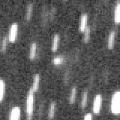
|
It returns for the first time in 70 years. It will brighten up to 4.5 mag in 2024 spring. Now it is 16.9 mag (May 9, Jean-Claude Merlin). Brightening gradually. In the Northern Hemisphere, it stays observable in good condition. In the Southern Hemisphere, it will be unobservable in July.
Date(TT) R.A. (2000) Decl. Delta r Elong. m1 Best Time(A, h)
May 20 19 32.18 46 42.1 4.273 4.495 96 17.0 3:13 (204, 77)
May 27 19 28.45 48 17.9 4.172 4.427 97 16.8 3:07 (184, 77)
|
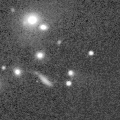
|
Now it is 17.5 mag (May 17, Toshihiko Ikemura, Hirohisa Sato). It stays 17 mag for a while. In the Northern Hemisphere, it stays observable in good condition. In the Southern Hemisphere, it will be unobservable soon.
Date(TT) R.A. (2000) Decl. Delta r Elong. m1 Best Time(A, h)
May 20 13 0.24 55 15.8 2.697 2.997 97 16.9 21:09 (180, 70)
May 27 13 2.04 54 25.8 2.731 2.980 94 16.8 20:47 (179, 71)
|
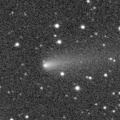
|
It continued brightening even after the perihelion passage, and brightened up to 13.9 mag in winter (Jan. 20, Hidenori Nohara). Now it is 17.3 mag (May 17, Toshihiko Ikemura, Hirohisa Sato). Fading slowly. It will be fainter than 18 mag in July. In the Northern Hemisphere, it will be getting lower gradually. It locates somewhat low in the Southern Hemisphere.
Date(TT) R.A. (2000) Decl. Delta r Elong. m1 Best Time(A, h)
May 20 8 34.49 23 8.6 3.222 2.972 66 16.9 20:40 ( 93, 38)
May 27 8 43.79 22 35.8 3.331 2.997 62 17.0 20:47 ( 96, 32)
|
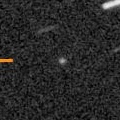
|
Now it is 17.2 mag (May 3, ATLAS-HKO, Haleakala). Fading slowly. It will be fainter than 18 mag in August. In the Northern Hemisphere, it will be getting lower gradually. It locates somewhat low in the Southern Hemisphere.
Date(TT) R.A. (2000) Decl. Delta r Elong. m1 Best Time(A, h)
May 20 9 23.32 21 52.8 2.205 2.227 78 16.9 20:40 ( 85, 47)
May 27 9 34.71 20 46.0 2.279 2.227 74 17.0 20:47 ( 87, 42)
|
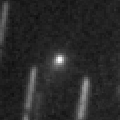
|
The ATLAS search program detected its cometary activity in April. Now it is 16.3 mag (May 18, ATLAS Chile). It stays 17 mag for a while. It locates somewhat low in the Northern Hemisphere. In the Southern Hemisphere, it stays observable in good condition.
Date(TT) R.A. (2000) Decl. Delta r Elong. m1 Best Time(A, h)
May 20 22 55.87 -24 51.0 2.621 2.696 83 17.0 3:13 (308, 8)
May 27 23 6.33 -24 33.5 2.552 2.702 87 16.9 3:07 (310, 10)
|
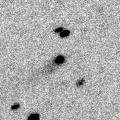
|
Now it is 16.9 mag (May 11, ATLAS Chile). It stays 17 mag for a while. It will be getting lower gradually after this, and it will be unobservable in September.
Date(TT) R.A. (2000) Decl. Delta r Elong. m1 Best Time(A, h)
May 20 12 29.38 14 4.0 8.431 8.997 121 17.0 20:40 ( 1, 69)
May 27 12 26.24 14 14.4 8.544 9.005 114 17.0 20:47 ( 25, 67)
|

|
It brightened up to 13.6 mag in 2021 (June 17, 2021, R. Carstens). Now it is 16.9 mag (May 2, ATLAS South Africa). It stays 18 mag for a while. In the Northern Hemisphere, it will never be observable after this. In the Southern Hemisphere, it stays observable in good condition.
Date(TT) R.A. (2000) Decl. Delta r Elong. m1 Best Time(A, h)
May 20 11 28.27 -70 9.5 6.014 6.540 117 17.1 20:40 ( 5,-16)
May 27 11 18.64 -69 3.2 6.071 6.572 115 17.1 20:47 ( 10,-16)
|
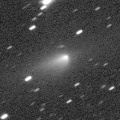
|
It brightened up to 12.7 mag in last year (Feb. 27, 2022, Jose Guilherme de S. Aguiar). Now it is 17.7 mag (May 2, ATLAS South Africa). Fading slowly. It will be fainter than 18 mag in August. It locates somewhat low in the Northern Hemisphere. In the Southern Hemisphere, it stays observable in good condition.
Date(TT) R.A. (2000) Decl. Delta r Elong. m1 Best Time(A, h)
May 20 20 8.21 -24 48.2 2.328 2.960 119 17.1 3:13 (343, 28)
May 27 20 7.98 -24 59.1 2.273 2.985 126 17.2 3:07 (348, 29)
|
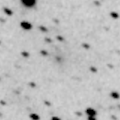
|
Now it is 16.4 mag (May 10, Michael Jager). Fading gradually. It will be fainter than 18 mag in July. In the Northern Hemisphere, it stays observable in good condition. It looks diffuse, but it has a large coma.
Date(TT) R.A. (2000) Decl. Delta r Elong. m1 Best Time(A, h)
May 20 22 10.15 15 23.9 2.236 2.272 79 17.2 3:13 (283, 44)
May 27 22 15.36 17 37.0 2.206 2.316 83 17.3 3:07 (283, 48)
|
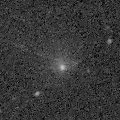
|
Very large comet. It is expected to brighten up to 14 mag in 2031. Now it is 16.7 mag (Apr. 14, Thomas Lehmann). It stays 17 mag for a while. In the Northern Hemisphere, it is not observable now. In the Southern Hemisphere, it stays observable in good condition. In the Northern Hemisphere, it is not observable until 2030.
Date(TT) R.A. (2000) Decl. Delta r Elong. m1 Best Time(A, h)
May 20 3 3.23 -57 24.3 17.838 17.650 77 17.2 3:13 (319,-45)
May 27 3 6.39 -57 31.9 17.775 17.625 79 17.2 3:07 (319,-42)
|
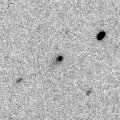
|
Now it is 17.3 mag (May 9, Yukihiro Sugiyama). It stays 18 mag for a while. In the Northern Hemisphere, it will be getting lower gradually. It locates somewhat low in the Southern Hemisphere.
Date(TT) R.A. (2000) Decl. Delta r Elong. m1 Best Time(A, h)
May 20 9 50.22 31 3.9 2.475 2.524 81 17.3 20:40 ( 94, 57)
May 27 9 59.38 29 51.3 2.548 2.519 76 17.3 20:47 ( 96, 51)
|

|
It has not been observed yet in this apparition. It stays 17 mag for a while. It stays observable in good condition.
Date(TT) R.A. (2000) Decl. Delta r Elong. m1 Best Time(A, h)
May 20 18 28.10 -14 10.8 2.047 2.901 140 17.4 2:40 ( 0, 41)
May 27 18 25.61 -13 34.5 1.972 2.878 147 17.3 2:10 ( 0, 41)
|

|
Now it is 18 mag (May 11, Giuseppe Pappa). It stays 17 mag for a while. In the Northern Hemisphere, it will be getting higher gradually. In the Southern Hemisphere, it stays observable in good condition.
Date(TT) R.A. (2000) Decl. Delta r Elong. m1 Best Time(A, h)
May 20 22 37.07 -8 33.1 3.037 3.044 80 17.4 3:13 (300, 23)
May 27 22 43.92 -8 19.4 2.942 3.041 85 17.3 3:07 (302, 26)
|

|
It showed cometary activity in 2023, and brightened rapidly. Now it is 17.3 mag (May 8, ATLAS South Africa). Fading slowly. It will be fainter than 18 mag in August. It stays extremely low in the Northern Hemisphere. In the Southern Hemisphere, it stays observable in good condition.
Date(TT) R.A. (2000) Decl. Delta r Elong. m1 Best Time(A, h)
May 20 14 26.34 -45 50.0 2.486 3.396 149 17.4 22:35 ( 0, 9)
May 27 14 21.93 -45 7.3 2.506 3.400 146 17.4 22:03 ( 0, 10)
|
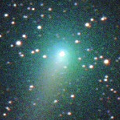
|
It brightened up to 9.3 mag in early summer in 2022 (June 5, Chris Wyatt). Now it is 17.4 mag (Apr. 28, ATLAS Chile). Fading slowly. It will be fainter than 18 mag in June. In the Northern Hemisphere, it will be unobservable soon. It locates somewhat low in the Southern Hemisphere.
Date(TT) R.A. (2000) Decl. Delta r Elong. m1 Best Time(A, h)
May 20 6 58.27 -2 29.4 4.845 4.303 52 17.5 20:40 ( 84, 4)
May 27 7 2.19 -1 40.1 4.990 4.366 47 17.6 20:47 ( 89, -2)
|
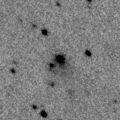
|
It approached to Sun down to 0.1 a.u. on Jan. 31. It was bright as 7.0-7.5 mag in early February (Feb. 5, Michael Jager). Now it is 17.4 mag (May 11, Giuseppe Pappa). It will fade out rapidly after this. It will be fainter than 18 mag in June. It stays observable in good condition.
Date(TT) R.A. (2000) Decl. Delta r Elong. m1 Best Time(A, h)
May 20 19 31.76 -13 6.4 1.433 2.181 125 17.5 3:13 (350, 41)
May 27 19 16.63 -14 10.5 1.428 2.268 135 17.7 3:02 ( 0, 41)
|
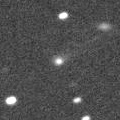
|
It brightened up to 15.9 mag in 2022 spring (May 5, Toshiyuki Takahashi). Now it is 16.8 mag (May 11, ATLAS South Africa). It stays 18 mag for a while. It stays observable in good condition.
Date(TT) R.A. (2000) Decl. Delta r Elong. m1 Best Time(A, h)
May 20 16 14.92 -24 32.6 3.936 4.939 171 17.5 0:28 ( 0, 30)
May 27 16 11.09 -24 26.6 3.935 4.947 176 17.6 23:52 ( 0, 31)
|

|
Now it is 17.4 mag (May 12, ATLAS-HKO, Haleakala). It stays 18 mag for a while. In the Northern Hemisphere, it stays observable in good condition. In the Southern Hemisphere, it will never be observable after this.
Date(TT) R.A. (2000) Decl. Delta r Elong. m1 Best Time(A, h)
May 20 17 26.41 79 33.0 10.081 9.950 79 17.7 1:37 (180, 45)
May 27 17 7.82 79 57.7 10.119 9.968 78 17.7 0:51 (180, 45)
|
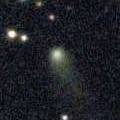
|
Now it is 17.4 mag (May 14, ATLAS-HKO, Haleakala). It stays 18 mag for a while. In the Northern Hemisphere, it stays observable in good condition. In the Southern Hemisphere, it will never be observable after this.
Date(TT) R.A. (2000) Decl. Delta r Elong. m1 Best Time(A, h)
May 20 18 49.66 62 13.0 6.477 6.559 90 17.8 3:01 (180, 63)
May 27 18 46.36 63 2.0 6.507 6.595 90 17.8 2:30 (180, 62)
|
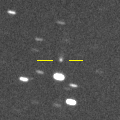
|
It was predicted to brighten up to 16 mag in 2023. But actually, it is very faint as 18.6 mag (May 3, iTelescope Deep Sky Chile, Rio Hurtado). Fading slowly. In the Northern Hemisphere, it is not observable now. In the Southern Hemisphere, it stays observable in good condition.
Date(TT) R.A. (2000) Decl. Delta r Elong. m1 Best Time(A, h)
May 20 21 6.94 -77 9.6 2.870 3.373 111 18.1 3:13 (353,-24)
May 27 21 2.71 -77 29.9 2.845 3.392 114 18.1 3:07 (354,-23)
|
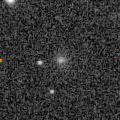
|
It moves along an almost circular orbit. It brightened up to 16.2 mag temporarily in outburst (Jan. 27, Toshihiko Ikemura, Hirohisa Sato). Now it is 18.2 mag (May 17, Toshihiko Ikemura, Hirohisa Sato). Fading slowly. In the Northern Hemisphere, it will be getting lower gradually. It locates somewhat low in the Southern Hemisphere.
Date(TT) R.A. (2000) Decl. Delta r Elong. m1 Best Time(A, h)
May 20 10 36.61 24 44.7 6.007 6.141 92 18.2 20:40 ( 75, 63)
May 27 10 38.10 24 20.1 6.114 6.141 86 18.3 20:47 ( 81, 56)
|
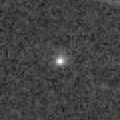
|
It was observed at 17 mag in 2022 autumn. It was predicted to be observable at 17 mag also in 2023 spring. But actually, it is extremely faint as 19.0 mag (May 16, Toshihiko Ikemura, Hirohisa Sato). It will fade out rapidly after this. It stays observable in good condition.
Date(TT) R.A. (2000) Decl. Delta r Elong. m1 Best Time(A, h)
May 20 17 29.28 24 11.6 1.358 2.146 129 19.8 1:43 ( 0, 79)
May 27 16 48.98 25 8.5 1.383 2.201 132 20.0 0:36 ( 0, 80)
|

|
In the last apparition, it had faded before the perihelion passage. It was expected to brighten up to 17 mag if it would become as bright as its last apparition. But actually, it is extremely faint as 22 mag (Apr. 8, Giuseppe Pappa). Fading slowly. It stays observable in good condition.
Date(TT) R.A. (2000) Decl. Delta r Elong. m1 Best Time(A, h)
May 20 13 47.59 7 28.3 1.834 2.691 140 21.6 21:56 ( 0, 62)
May 27 13 45.77 7 12.2 1.877 2.683 134 21.7 21:27 ( 0, 62)
|
|
![]()
 77P/Longmore
77P/Longmore P/2018 HT3 ( NEOWISE )
P/2018 HT3 ( NEOWISE ) 126P/IRAS
126P/IRAS C/2021 X1 ( Maury-Attard )
C/2021 X1 ( Maury-Attard ) 199P/Shoemaker 4
199P/Shoemaker 4 C/2022 W3 ( Leonard )
C/2022 W3 ( Leonard ) C/2022 L2 ( ATLAS )
C/2022 L2 ( ATLAS ) C/2023 B2 ( ATLAS )
C/2023 B2 ( ATLAS ) C/2022 E2 ( ATLAS )
C/2022 E2 ( ATLAS ) C/2021 G2 ( ATLAS )
C/2021 G2 ( ATLAS ) C/2020 S4 ( PanSTARRS )
C/2020 S4 ( PanSTARRS ) 117P/Helin-Roman-Alu 1
117P/Helin-Roman-Alu 1 C/2020 R7 ( ATLAS )
C/2020 R7 ( ATLAS ) C/2023 A3 ( Tsuchinshan-ATLAS )
C/2023 A3 ( Tsuchinshan-ATLAS ) C/2022 A3 ( Lemmon-ATLAS )
C/2022 A3 ( Lemmon-ATLAS ) 118P/Shoemaker-Levy 4
118P/Shoemaker-Levy 4 72P/Denning-Fujikawa
72P/Denning-Fujikawa 103P/Hartley 2
103P/Hartley 2 C/2019 E3 ( ATLAS )
C/2019 E3 ( ATLAS ) C/2022 P1 ( NEOWISE )
C/2022 P1 ( NEOWISE ) 12P/Pons-Brooks
12P/Pons-Brooks C/2022 U4 ( Bok )
C/2022 U4 ( Bok ) 119P/Parker-Hartley
119P/Parker-Hartley 94P/Russell 4
94P/Russell 4 C/2022 JK5 ( PanSTARRS )
C/2022 JK5 ( PanSTARRS ) C/2020 F2 ( ATLAS )
C/2020 F2 ( ATLAS ) C/2018 U1 ( Lemmon )
C/2018 U1 ( Lemmon ) 116P/Wild 4
116P/Wild 4 80P/Peters-Hartley
80P/Peters-Hartley C/2014 UN271 ( Bernardinelli-Bernstein )
C/2014 UN271 ( Bernardinelli-Bernstein ) 180P/NEAT
180P/NEAT 219P/LINEAR
219P/LINEAR 287P/Christensen
287P/Christensen P/2014 OL465 ( PanSTARRS )
P/2014 OL465 ( PanSTARRS ) C/2021 E3 ( ZTF )
C/2021 E3 ( ZTF ) 96P/Machholz 1
96P/Machholz 1 99P/Kowal 1
99P/Kowal 1 C/2019 O3 ( Palomar )
C/2019 O3 ( Palomar ) C/2020 H6 ( ATLAS )
C/2020 H6 ( ATLAS ) C/2021 C5 ( PanSTARRS )
C/2021 C5 ( PanSTARRS ) P/2023 B1 ( PanSTARRS )
P/2023 B1 ( PanSTARRS ) C/2022 Q2 ( ATLAS )
C/2022 Q2 ( ATLAS ) 280P/Larsen
280P/Larsen![]()






















































